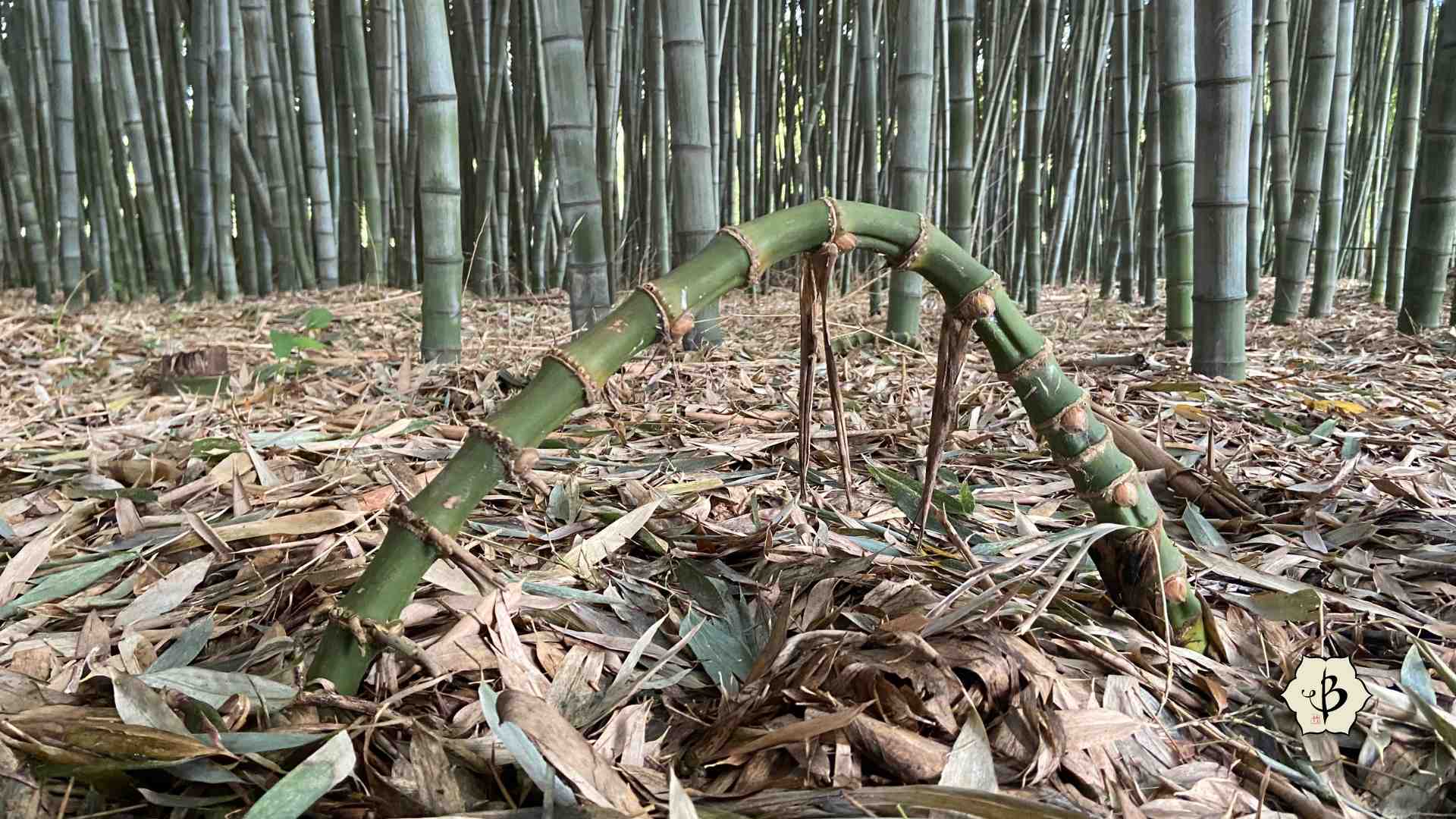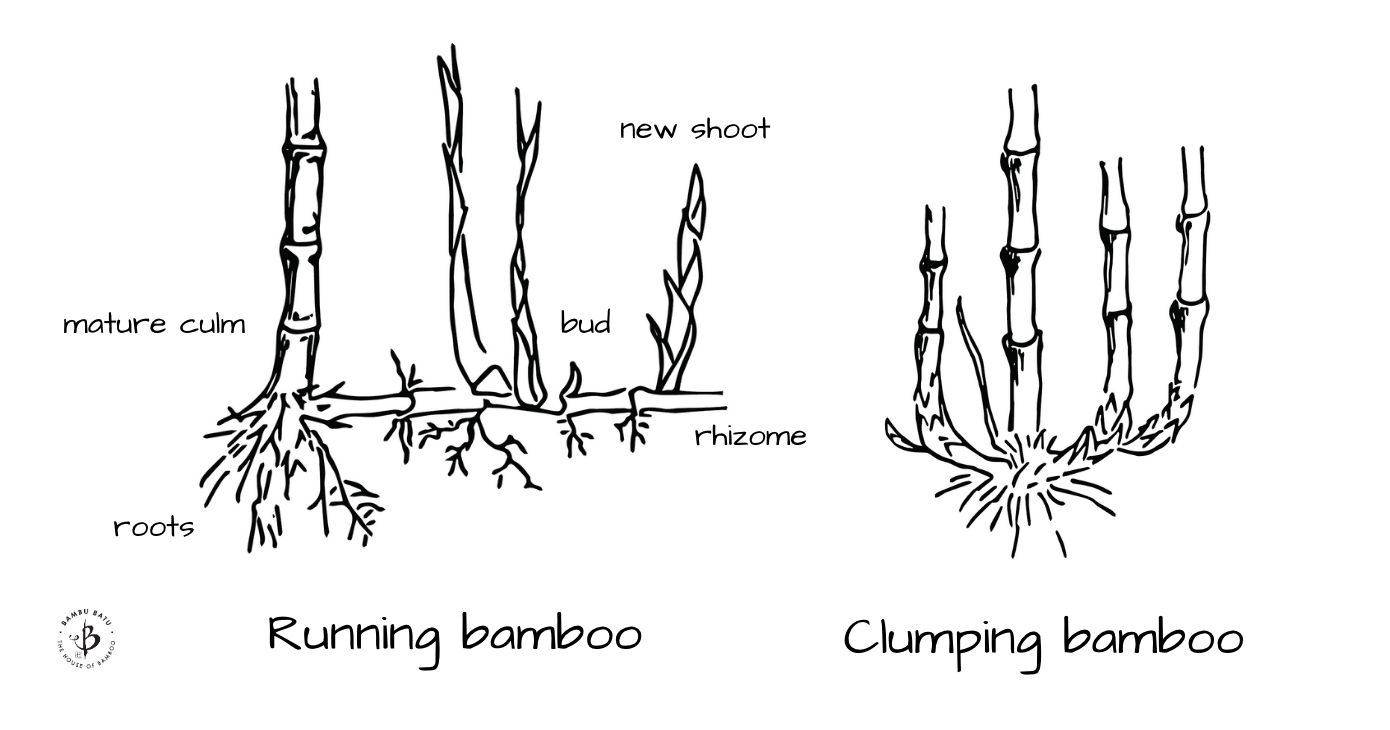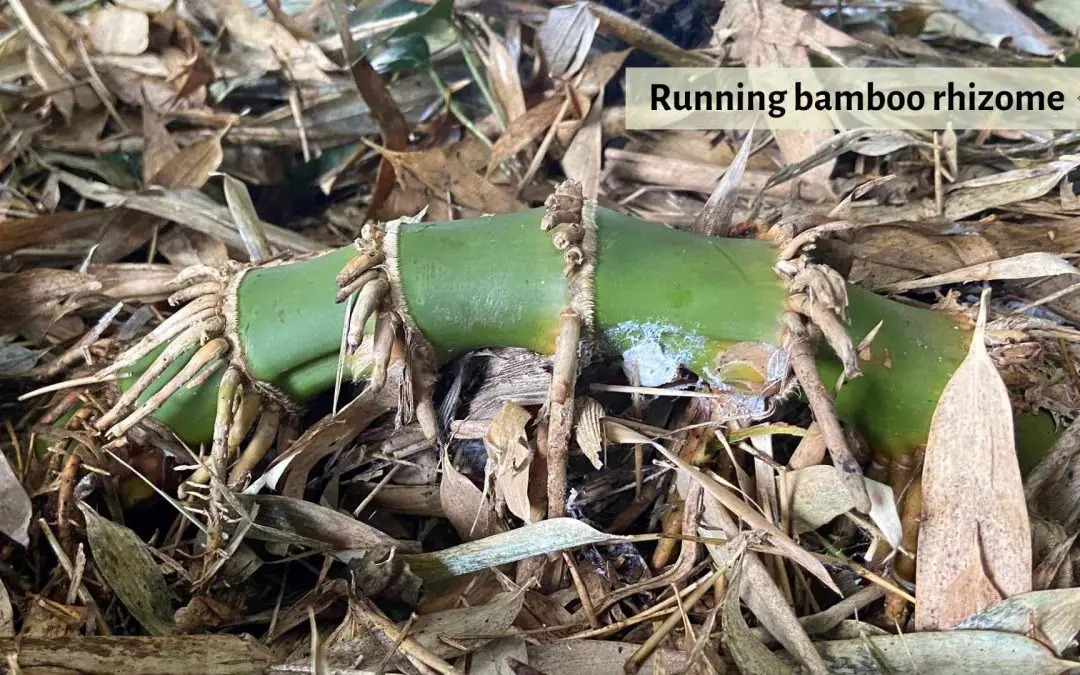If you tell your neighbor you’re planting a grove of bamboo in your backyard, be prepared for a variety of responses. Maybe they love bamboo as much as I do, and they’ll want to slap you a high five. But maybe they’re terrified by bamboo’s famously spreading rhizomes, and they’ll want to slap you somewhere else. Bamboo rhizomes are an incredible form of life. And the etymology behind the meaning of the word rhizome is even more fascinating.
The origin of the word “rhizome” traces back to ancient Greece and is related to the word “risk”. Both of these words are derived from the Greek “ριζα” (“rhíza”) meaning “root”. Planting the wrong type of bamboo can be a risky move. But there’s much more to the story. In Homer’s Odyssey, Zeus sends Odysseus through the Scylla and Charybdis, and then destroys his ship with a bolt of lightning. After its destruction, the hero clings to the roots of a fig tree on an island cliff to survive one of the riskiest scenes in all of world literature.
NOTE: This article first appeared in June 2021, most recently updated in April 2024.

Roots, risks and rhizomes in Homer’s Odyssey
Most of us are familiar with the myth of Scylla and Charybdis, the jagged rock and the dangerous whirlpool that strike fear in the hearts of sailors. In legends, idioms, and popular culture, it is a recurring motif akin to a rock and a hard place. But the story first appeared in Homer’s Odyssey.
Who knew that the same epic poet who gave us the Trojan Horse and the story of the Sirens sweetly singing also gave us the common root for the words risk and rhizome?
Indeed, before gaining fame as a rock and a whirlpool, Scylla and Charybdis were actually a pair of sea monsters, tormenting sailors in the straits between Sicily and Calabria (the toe of Italy). In Homer’s classic adventure, Odysseus’ ship barely makes it through this dangerous passage. The six-headed Scylla snatches and devours six of his best crewmen. Then the survivors find themselves shipwrecked on the shore of Sicily.
Things go from bad to worse when the men ignore the gods and roast a sacred cow belonging to the titan Hyperion. By way of punishment, Zeus delivers his wrath in the form of lightning and thunder, destroying the ship and killing everyone but Odysseus.
Flailing at sea, Odysseus is able to save himself by clinging to the dangling root (“rhiza“) of a cliff-dwelling fig tree. The etymology grows still more interesting when we learn that “cliff” in early Italian is “risco“.
From the straits of Scylla and Charybdis to Zeus’s divine retribution to the uncertain cliffhanger, Odysseus navigates one life-threatening risk after another. And the timeless myth has many valuable lessons to teach us.

The riskiness of bamboo rhizomes
Homer’s tale draws a connection between a risky misadventure and a dangling root from which Odysseus hangs desperately for dear life. But the risk you face from a bamboo rhizome is something quite different.
We usually like to separate bamboo into two different categories: runners and clumpers. This distinction is based on the morphology of the rhizomes.
Bamboo with pachymorph or sympodial rhizomes we call clumping. These rhizomes bend upwards in a U-shape. And as the name suggests, the culms cling closely together. These varieties of bamboo pose little risk.
Running bamboo, on the other hand, has long, leggy rhizomes that stretch outward, making a subterranean bee-line away from the main plant. Before the plant starts sending fresh shoots upwards, it has probably already built a vast underground network. These are the kind of the bamboo rhizomes that can be more threatening.
Without proper containment, an aggressive running bamboo can wreak havoc on your garden. It can tunnel under fences and property lines and turn neighbors into enemies. Once it’s established, trying to remove it can be something of Sisyphean task.

Lessons from the Ancient Mythos
By planting the wrong variety of bamboo, you can put your whole garden at risk. The elegant grass can operate like a Trojan Horse, bringing an army of invasive roots, hidden just beneath the first layer of topsoil. But if you’re wise like a Greek hero, and select the right species of bamboo, this danger can be carefully averted.
And risks also have rewards. If you plan properly and dig a trench or bury a rhizome barrier around your bamboo, you can enjoy many years of sublime beauty without having to suffer supernatural wrath from the underworld.

Bamboo Classification: Running vs Clumping Rhizomes
Given that there are more than 1,500 distinct varieties of bamboo, it’s no surprise that their rhizome systems will operate somewhat differently. Essentially, the subfamily of grasses known as Bambusoideae is divided into two tribes, tropical bamboo classified as Bambuseae and temperate bamboo belonging to Arundinarieae.
In layman’s terms, tropical bamboo is usually called clumping bamboo, while temperate bamboo varieties are running bamboo. This distinction is based on the form on function of their rhizomes, as illustrated in the drawings above. Botanists (and bamboo nerds) refer to the clumping rhizomes as pachymorph or sympodial, while running have what are called leptomorph or monopodial rhizomes.
See our article on Bamboo Terminology to learn more.
Most gardeners will prefer clumping bamboo, as it is far less likely to turn invasive. Running bamboo, however, can be risky. But in cold climates and larger plots of land, running bamboo has its advantages. Clumping bamboo doesn’t do so well in places where snow is common and winter freezes last for days and weeks. But if you’re looking for cold-hardy clumping bamboo, check out the genus Fargesia.

Let your curiosity run
If you like geeking out on bamboo as much as I do, our blog is filled with thought-provoking fodder that you’re bound to enjoy. Check out some of the following articles and let your curiosity run wild.
- Zymomonas mobilis: An exciting enzyme for bamboo processing
- Bamboo in mythology and folklore
- Are bamboo shoots poisonous?
- Bamboo as a pioneer species
FEATURE IMAGE: Running bamboo rhizome and roots. Photo by Fred Hornaday.

























